Moby Dick, my Gideons bible, lives in the bedside drawer. Ahab’s Pequod is always ready to sail and carry me away on nights when sleep does not come easy.
The last time I was in Heidelberg I pinched some wi-fi from a coffee shop. If the founders of the coffee shop chain had stayed with their first idea they would have called it Pequod but in the end they decided to name it after the first mate aboard the whaler, Starbuck.
The oldest member of Ahab’s crew is, like me, a Manxman, and looking up from Starbucks I could see a third Moby Dick connection, Heidelberg Castle.
Chapter 77, “The great Heidelburgh Tun” is named after the big wooden barrel in the castle. The huge upper part of the Sperm Whale’s head, the case, contains the valuable spermaceti and Melville calls it the Heidelberg Tun of the Sperm Whale.
Re-caffeinated, I took the opportunity to rewrite the first paragraph of ‘Loomings’ – Chapter 1 of Moby Dick.
Chapter 1. Googlings (with apologies to Herman Melville)
Call me John. Some hours ago—never mind how long precisely—having little or no credit left on my card, and nothing particular to interest me in the forest, I thought I would walk about a little and see the coast of the watery part of the world. It is a way I have of driving off the spleen and regulating the circulation. Whenever I find myself growing grim about the mouth; whenever it is a damp, drizzly November in my soul; whenever I find myself involuntarily browsing beaches on Google Earth and especially whenever listening to the shipping forecast though 15 days walk from the sea, I account it high time to get to a beach as soon as I can. This is my substitute for TV, and most of the time for, drugs and rock and roll. With a philosophical flourish Cato throws himself upon his sword; I quietly take to the shore. There is nothing surprising in this. If they but knew it, almost all men in their degree, some time or other, cherish very nearly the same feelings towards the coast with me.
In September I took my life in my hands and for the first time I satisfied my beach craving with a visit to south-west England. I inspected some of the famous oft-tweeted sandy patches and walked stretches of the cliff top coastal path in order to climb and slide down to some of the more inaccessible corners in search of washed up treasure.
There are some grand ‘unstable’ cliffs and the Atlantic thunders into many hidden coves and onto fine long strands. It is easy to tell how mad-busy it must be in summer from the size of the beach car parks, the number of caravans and the rash of ‘Private’ signs and health and safety warnings. I have never met a pay car-park by a beach in Ireland or Scotland but every beach car-park we found in England was pay and display. It must be costly business to take your dog to the beach twice a day to do its business.
St Ives looked idyllic from a distance but even on a wet November Monday it was busier than the Isle of Man in TT week. ‘Holiday Let’ notices decorated the windows of the many second home cottages in the inner streets and I have it on good authority that St Ives can be hell in the school holidays.
We tunnelled through Devon’s dark, damp, deep-set roads and lanes in South Hams in search of the quieter beaches. My first impression of places and people can take some shifting and after 10 minutes in Dartmouth I couldn’t get the ferry out quick enough but then found Brixham more to my taste and it was good to see half a dozen of the old Brixham trawlers among the bling boats at the marina.
As soon as I was old enough to tie a half blood knot I was often left for the day on the then busy piers of Peel or Port St Mary to annoy fish. The waste from the landing of the catch, salting of the herring and filling of the wooden barrels brought the mackerel right into the harbour. The best place to catch them was between the unloading fishing boats. I still enjoy scratching around fishing harbours and have spent many happy hours poking around ports from Fraserburgh and Peterhead to Killybegs. This may explain why I was fecked-0ff when at Brixham for the first time a security guard denied me access to a harbour for health and safety reasons.
Even off-season I never felt far from the dreaded evil – other people. Robinson was pleased to find Friday but I prefer not to find someone else’s footprints on ‘my beaches’.
I understand there are parts of Dartmoor where you are free to camp and if you arrive late and leave early then a discreet backpacker, though clearly not welcome in England, would find a pitch for a night on the parts of the coast path that I walked. Sadly much of the coast is a victim of its popularity and it is hard not to compare it unfavourably with the west coast of Ireland and with the highlands and islands of Scotland. I found none of the sense of freedom that comes with Scotland’s open access and camping rights.
But it was worth the trip as I managed to add T to my alphabet.
Earlier in the year we walked the coast of UKIP-land, from Brighton to Deal. Off season visits to the docks at Liverpool or Stranraer and an hour or two spent on winter Sundays in Morecambe waiting for the Heysham ferry had prepared me well for what to expect passing through Folkestone and Dover.
Lowlights included getting lost in a grim housing estate between Hastings and Rye after the footpath came to a precipitous end at a cliff collapse and being ‘treed’ by a pack of pit bulls terriers. They were being ‘exercised’ by a family turned out in their Sunday-best saggy grey tracksuit bottom & football shirt uniform.
One way to keep to the coastal path in these parts is to follow the markers, those English favourites, the discarded little knotted black plastic bags of dog shit.
But there were two jewels in the south coast crown.
Dungeness was magnificent.
I felt more at home on the 13 mile walk from The Jolly Fisherman around the point and along the shingle to Rye Channel than I did on any National Trust or Duchy of Cornwall beach in Devon or Cornwall.
Even the great blocks of the nuclear power-station did not spoil the day. I stood and turned round and round many times to soak in the 360 degrees of sky, shingle and sea.
Storms have created a series of long ranks of shingle waves set parallel to the beach and running far inland from the current tide-line. I dozed in the warming sun in a sheltered hollow between the shingle wave tops and let the earth take my weight.
The wooden clad houses made it feel more like the west coast of Denmark than of England. There are many skeletons here, fishing huts, winches, wooden boats and an occasional army shell but there are still some fishermen and there are still people living in Dungeness who understand how fragile and precious it is and who will hopefully lead the efforts to protect this place from becoming “architect-designed to death” or just another dead resort of holiday homes.
We visited Dungeness Open Studios and were welcomed handsomely by Paddy Hamilton.
In the Guardian Tom Dyckhoff warned “Dungeness might end up a bit Dalston-on-Sea if it’s not too careful, a sort of Hamptons for hipsters who like the hum of a nuclear power station over their granola”. I am not sure what a granola is but I would be more concerned that Dungeness might end up like some of the less fortunate stretches of the coast of Devon or Cornwall.
Just north of the nuclear power-station there is a firing range and it is only possible to walk to Rye when this is not in use. What fun to have a firing range alongside a nuclear power station.
The south-west coast picks up most transatlantic tropical drift-seeds, but it was Dungeness that produced treasure this time, a sea bean, sea heart (Entada gigas), from the Caribbean or South America.
A Pontins Holiday camp and an all day dining opportunity mark the Rye end of the great shingle beach.
Our last stop and the second jewel in the English south coast crown was Deal. I liked everything I saw of the town, the locals were friendly, the seafront is surprisingly unspoilt and the pier with its tackle shop at the prom end and cafe at the business end is one of England’s finest fishing platforms, therapy after the bollocks of Brighton’s amusement arcade pier. The first domestic high-speed trains now run from London to Deal in 85 minutes and no doubt this is short enough journey times to allow some commuters to live here b side the c.
I was scanning some old family documents on my return home. Turns out one of my ancestors visited Dungeness but he didn’t return home. Thomas Quilliam died of exposure in the wreck of the schooner Hugh Barclay at Dungeness in an easterly force 10 on 13th March 1891 and is interned there.
And so as “the great shroud of the sea rolls on as it rolled five thousand years ago” it is time to spread out some new maps and to decide where next.
Somewhere out there is a footprint-free beach with my 2 waiting to be found.

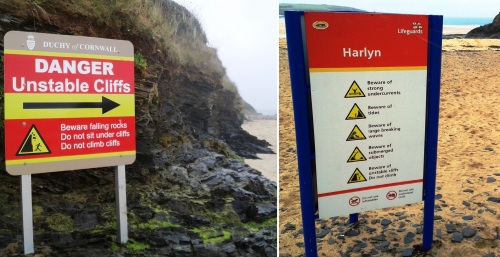
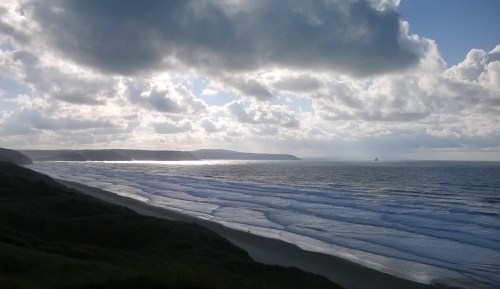
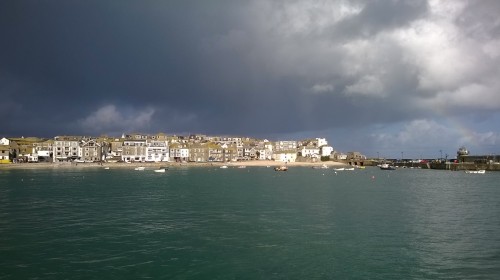
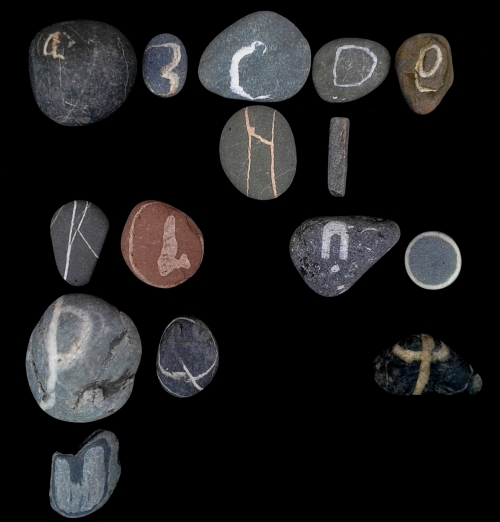
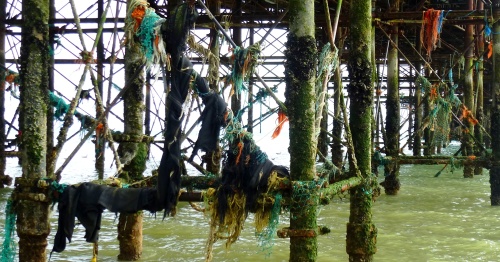
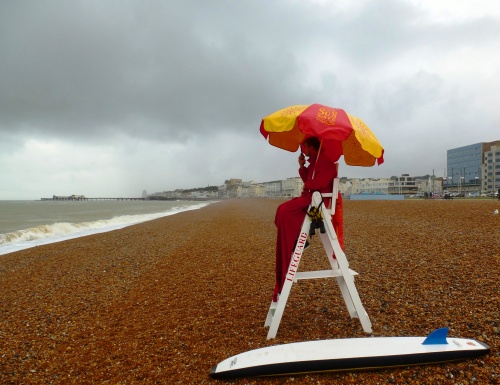
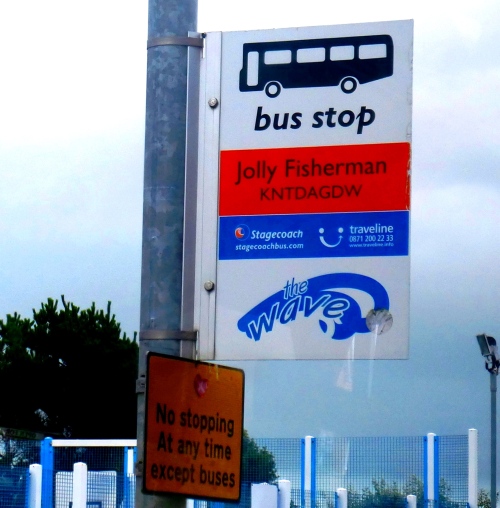
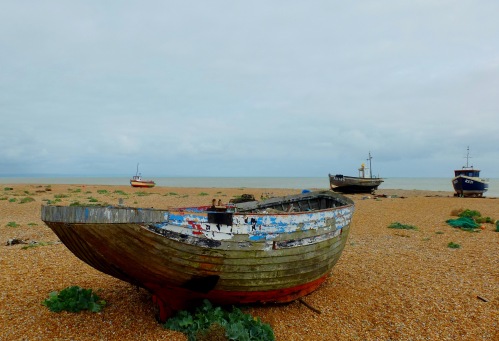
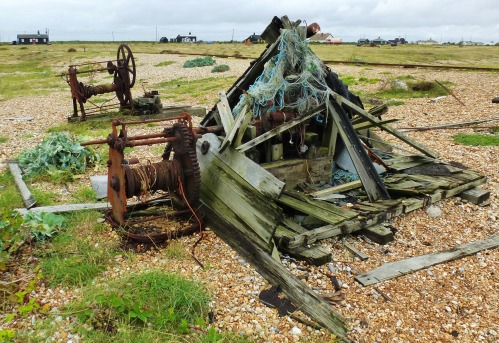

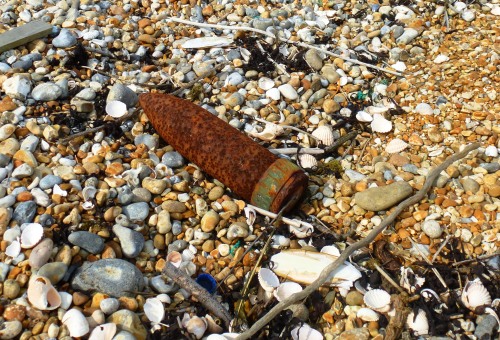

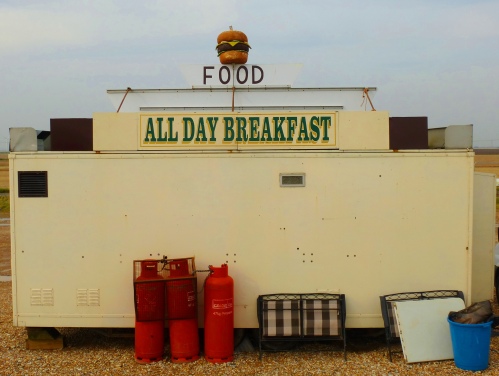

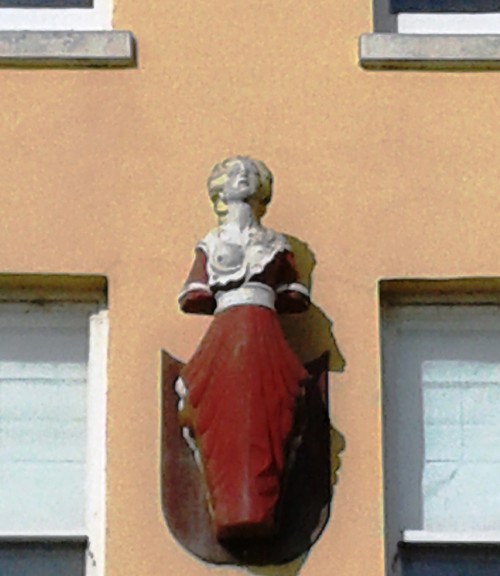


In your south-west explorations you appear to have missed an important opportunity!
http://www.bing.com/maps/?v=2&cp=50.219271~-3.662157&lvl=16&sty=s&sp=Point.sc2x0wgpv6qm_50.21934%252C%2520-3.66368_50.21934%252C%2520-3.66368___&eo=0&q=50.21934%2C%20-3.66368